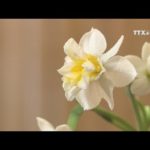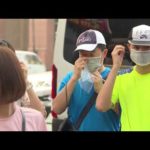Every Vietnamese family is required to have a five-fruit tray as an offering on their ancestral altars during the traditional New Year. This tray symbolizes the respect and gratitude that the present generation has for their ancestors and the land they inhabit.
The five-fruit tray typically consists of fruits in various colors, representing the five elements – Metal, Wood, Water, Fire, and Earth.
In East Asian and Southeast Asian cultures, the number 5 is believed to bring luck and good fortune. It also represents the five blessings that people wish for in the new year – wealth, luxury, long life, health, and peace.
Each region may choose specific fruits for the five-fruit tray, depending on its climatic characteristics and traditional beliefs. However, all the fruits must be fresh, delicious, and visually appealing. The choice of fruits is based on their shape and color, which hold symbolic meanings.
In the northern region, the five-fruit tray often includes banana, pomelo, papaya, persimmon, sapodilla plum, orange, Buddha’s hand, figs, and jujube. The hand of green bananas symbolizes family reunion during Tet. Pomelo represents success and prosperity, persimmon represents wealth and luck, orange represents health and success, and Buddha’s hand symbolizes blessings from ancestors, God, and Buddha in the new year.
To create a balanced tray, a hand of bananas is usually placed in the center, with the bananas pointing upright and the pomelo on the concave surface of the bananas. Oranges, sapodilla plums, and apples are then placed in the gaps between the bananas and the pomelo. The remaining gaps are filled with kumquats, creating a full and compact tray of fruits. The colors of the fruits form a harmonious combination.
For example, the tray may feature the dark green of bananas, the light yellow of pomelo, the deep red of persimmon, the reddish-yellow of orange and kumquat, the light green of jujube, and the dark brown of sapodilla plum. Small fresh leaves of kumquat are placed on the tray to complete the picture.
In the central and southern regions, the five-fruit trays often include dragon fruit, bananas, watermelon, pineapple, orange, tangerine, custard-apple, figs, coconut, mango, or other fruits.
In the south, the types of fruits are chosen based on their homophonic names. For example, the words for custard apple, coconut, papaya, and mango sound like “cau vua du xai” in the local dialect, which means “praying to have enough money.”
Watermelon, with its round shape and sweet taste, symbolizes good luck in the new year. Dragon fruit is often included in the five-fruit tray as it is believed to bring good fortune.
Although the fruits may differ across regions, they all carry the cultural value of “When eating fruit, remember the fruit growers.” This tradition expresses respect and gratitude to ancestors while praying for a year of peace, good health, and prosperity.
Furthermore, all the selected fruits have scientifically proven nutritional value. For instance, bananas are rich in vitamins B6, B12, and folate, which play a significant role in blood cell production. They also contain ample amounts of vitamin C, magnesium, manganese, selenium, vitamin E, and beta-carotene, which help strengthen the immune system. Bananas are undeniably beneficial for human health.
Pomelo is high in vitamin C and packed with nutrients that have antioxidant properties, aiding in cell detoxification. Ripe dragon fruit is rich in pectin mucus, soluble fiber, and insoluble fiber, all of which help prevent and treat constipation, promote weight loss, and prevent conditions like obesity, atherosclerosis, and colitis.









